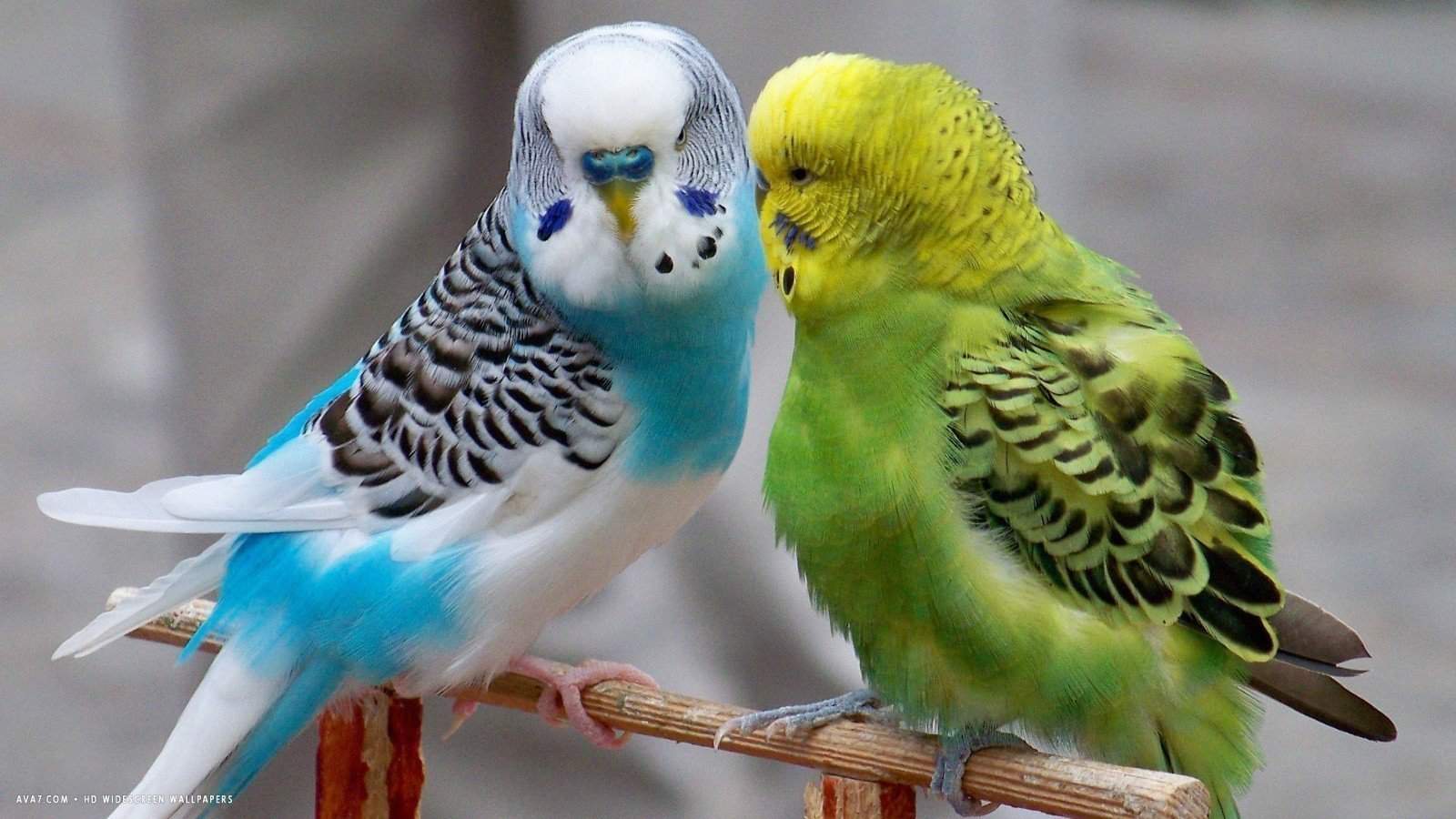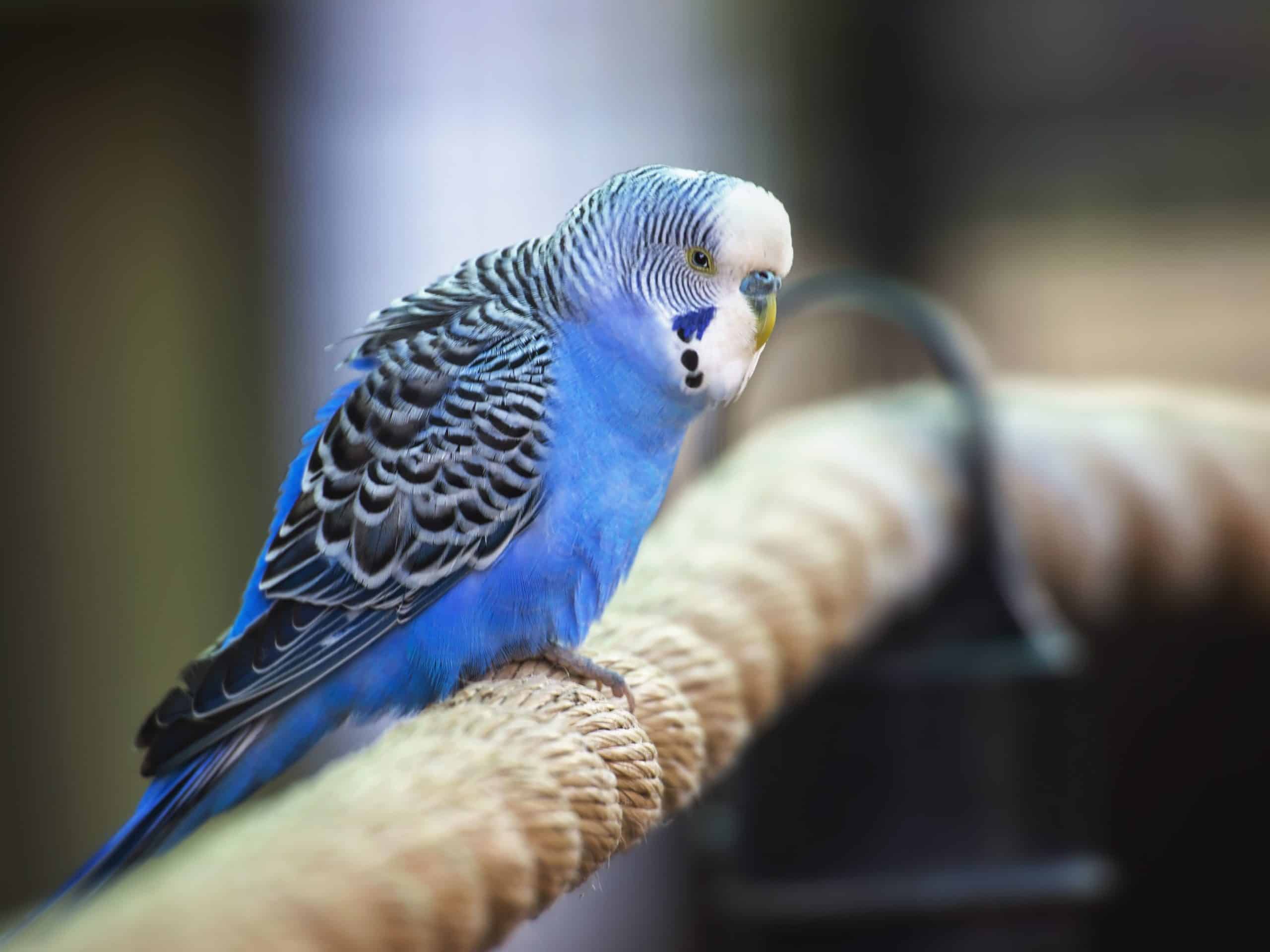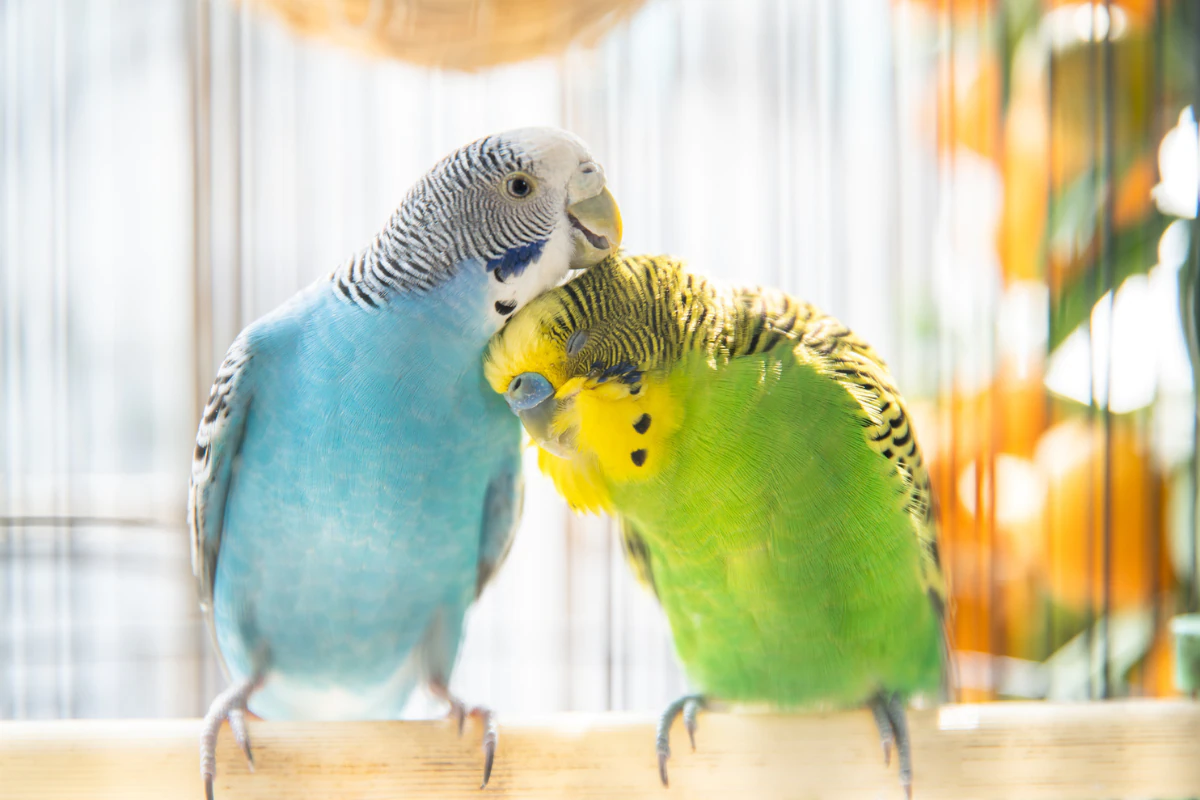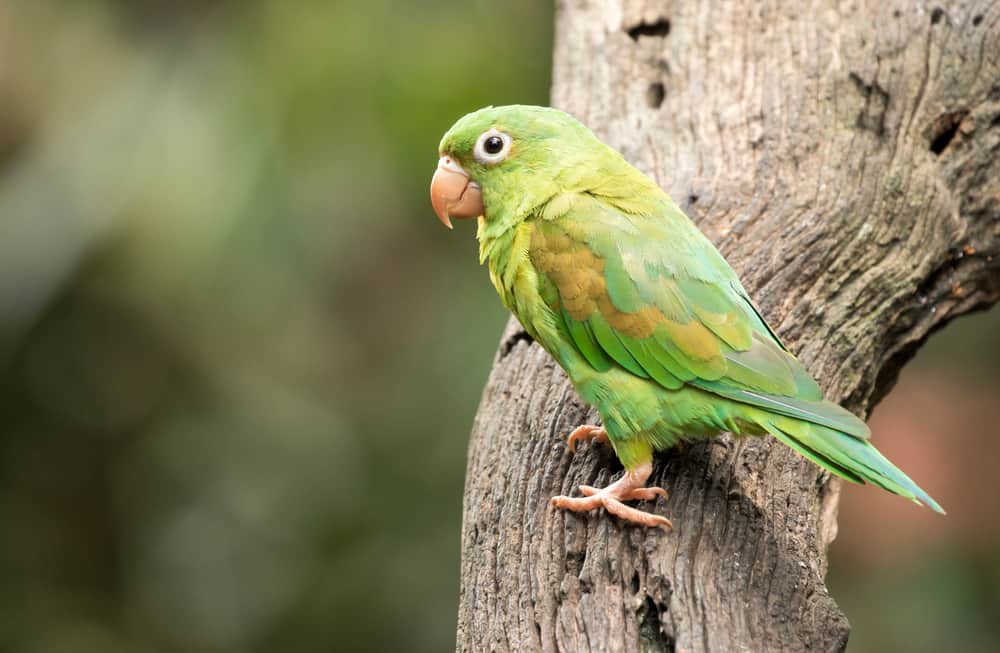Parakeets are a family of small to medium-sized parrots. They are also called budgerigars, or simply budgies, in Australia. The family of parakeets consists of over 100 species that come in many unique colorways.
The most common ones are green or yellow with black markings on their wings, nape, and back. But, they can also have other unique colors like the Blue Australian Budgerigar. They also usually have very long tails.
Parakeets, particularly budgerigars, are among the most popular pets to have, as you can easily train them to obey you. In fact, these birds are commercially bred and sold as pets, and they are the third most common pet after the dog and the cat.
If you’re looking to get a species of parakeet and want to know more about a parakeet’s diet, you’re in luck! In this article, we’ll thoroughly explain what parakeets eat, how to feed them, as well as some of their natural predators.
What Do Parakeets Eat?
Parakeet is primarily a granivore species, which means that their diet revolves around seeds. However, it’s a very versatile animal when it comes to food. Most wild parakeets feed off seeds, leaves, or grasses, as well as fruit and insects found in forests.
Nevertheless, just like all animals, parakeets also need specific nutrients and vitamins to be healthy. A parakeet’s diet should have a balanced mix of seeds or pellets, fruit, and vegetables, as well as nuts and some legumes. Here’s a detailed guide on what you can feed your parakeet:

Pellets
Pellets are one of the main types of food that parakeets eat. You can find many different types of pellets in pet stores. There are cheap ones if you don’t want to spend a fortune, and there are also more expensive ones that include vegetables and other nutrients inside.
Pellets are a great food option if you’re out of the house for most of the day. Just make sure to keep your bird’s feeder full of pellets; it will eat whenever it wants.
Nevertheless, you shouldn’t rely solely on pellets for your budgie’s diet, as most contain only grains and no additional nutrients. The most significant disadvantage of pellets is that they don’t stimulate your bird’s digestion well enough, which can cause health problems.
Seeds
You can also follow a seed-based diet for your parakeet. Just like with pellets, seeds, like buckwheat, are not nutritionally complete, and you’ll need to use other foods to ensure a balanced and healthy diet for your bird.
Also, there’s the notion that parakeets that eat seeds need gravel or grit to digest properly. However, this is not true, as this only applies to birds that eat seeds with the hull. Parakeets always make sure to remove the hull before eating the seed.
Parakeets are not particularly picky when it comes to seeds and will happily devour millet seeds, sunflower seeds, and even other types of bird seeds.
Make sure to buy bird seeds that are appropriate for small birds like canaries; otherwise, your parakeet won’t be able to eat larger pieces. Also, larger seeds contain more calories which can be unhealthy and cause obesity.
Vegetables
Vegetables should be an essential part of your parakeet’s diet, as they contain several necessary vitamins and nutrients for its health and wellbeing. After all, wild parakeets often eat green leaves, dandelion leaves, and other types of vegetation.
Most green leaf vegetables are safe to feed to budgies, but you should always do your research and avoid those that contain large amounts of pesticides like spinach. Some good options for vegetables are:
- Lettuce
- Cabbage
- Asparagus
- Cucumber
- Zucchini
- Carrots
- Celery
- Broccoli
- Kale
- Pumpkin
- Tomatoes
Fruit
Fruit is another type of food that’s crucial to the health of parakeets, thanks to the vitamins and minerals they contain, like potassium. However, you should be careful which fruit to feed your birds, as some of them can cause digestive issues, while others have pesticides.
Also, fruit generally has a high sugar content and should, therefore, be consumed rarely to avoid issues like diabetes. Here’s a list of fruit that is safe and healthy for budgies to enjoy:
- Apricots
- Apples
- Bananas (with the skin)
- Cherries
- Lemons
- Mango
- Melon
- Grapes
- Pineapples
- Peaches
- Oranges
- Strawberries
- Blackberries
- Coconut
Nuts
Birds love to eat nuts, and you can easily feed your parakeet with many different types of nuts. Also, they are very healthy as they contain omega-3 fatty acids and antioxidants. Some safe and healthy nuts to feed your bird are:
- Almonds
- Walnuts
- Pistachios
- Pecans
- Hazelnuts
- Brazil nuts
- Pumpkin seeds
- Sunflower seeds
One nut that you should generally avoid is peanuts. Peanuts can get moldy very quickly and produce a liver toxin called aflatoxin. This toxin is not dangerous for humans since the human body is very large and can metabolize and release it without harm. But, the body of a small bird like a budgie can’t handle the toxin, and it can be fatal.

Legumes
Legumes are an excellent source of protein, both for humans and for birds. After all, most of a bird’s diet consists of grain-based foods that are very low in protein. Therefore, supplementing your parakeet’s diet with some cooked legumes can benefit its health.
Some legumes you can feed your bird include cooked lentils, beans, chickpeas, and split peas. Just make sure to cut the bigger ones into smaller pieces, so your budgie can enjoy them.
Treats
Remember that most food made for humans can be unhealthy for small birds like parakeets. However, if you want to give a small treat to your budgie every now and then, these are some harmless treats that you can use:
- Millet spray
- Honey
- Bread
- Eggs (boiled or scrambled)
- Cake

How Often and How Much Do Parakeets Eat?
Parakeets are generally very flexible when it comes to feeding frequency. You can apply a strict schedule of two to three meals daily, but you can also free-feed them. Remember that parakeets are tiny birds, so they can’t eat large quantities of food.
If you keep their feeder full, they can choose to eat whenever they want and as much as they need. Also, you should always keep a clean bowl of fresh water for them, particularly during the hotter months.
In terms of quantity, parakeets will usually eat small portions depending on their developmental stage. Smaller or younger birds eat between ½ to 1 teaspoon of seeds or pellets, whereas adult or larger birds can eat up to 1 tablespoon.
How to Feed Baby Parakeets?
If you’re interested in getting some baby parakeets, you need to make sure they are fully weaned. The process of feeding a baby parakeet can be very complicated, and you need previous experience to do it properly.
That’s because chick parakeets are only fed by their parents, so they are used to eating food from their parents’ beaks. Therefore, when you hand-feed a baby parakeet, you need to use a syringe or a small spoon that’s bent to resemble a parakeet’s beak.
You also need to purchase unique baby bird formula because newborn parakeets are not ready to follow the same diet as adults. The formula comes in a powder form that you mix with water to make a slurry. You’ll then need to feed the baby parakeet with the appropriate amount depending on its age.
You should try to maintain a schedule when feeding your baby budgies. Make sure to consult your vet, and always inform them if the babies refuse to eat. Ideally, you’ll want to look for a breeder who sells fully weaned baby parakeets to avoid any troubles with their feeding.
What Are the Parakeets’ Predators?
Wild parakeets that live in rainforests usually have many predators due to their small size. The biggest threat for parakeets is larger birds like falcons or eagles. These large birds can easily swoop down and eat little budgies, especially in their nests. Other predators include snakes and monkeys.
Pet parakeets don’t really have any predators, as they are usually kept in cages. However, a potential predator for them can be cats. Wild cats that live on the streets and are not fed well may prey on parakeets if they can reach them.
You should ensure your parakeet is always occupied because if it’s left alone for a prolonged period, it can get depressed or cause self-harm.
Tips on Feeding Parakeets
As a general tip, remember that a parakeet’s diet can be very flexible and includes several different types of food. But, some types of food can be unhealthy or even toxic for a bird. These include:
- Avocado
- Chocolate
- Onion
- Garlic
- Dairy products
- Mushrooms
- Crackers
- Anything that contains alcohol
Also, you need to make it easy for your budgie to enjoy its food. You should always cut fruit and vegetables into small pieces to fit your little bird’s mouth. Moreover, don’t forget to keep the feeding bowls clean! After all, you wouldn’t want to eat from a dirty plate, right?
Finally, adding a cuttlebone or mineral block to your bird’s cage can go a long way for its health. It can munch on it whenever it wants and get some necessary minerals while maintaining the sharpness of its claws and beak.
Conclusion
All in all, parakeets are an excellent pet choice, as they require minimal maintenance, they offer great company, and you can also train them. If you’re looking for a pet and don’t enjoy cats or dogs, consider getting one or a few parakeets to keep you company!
